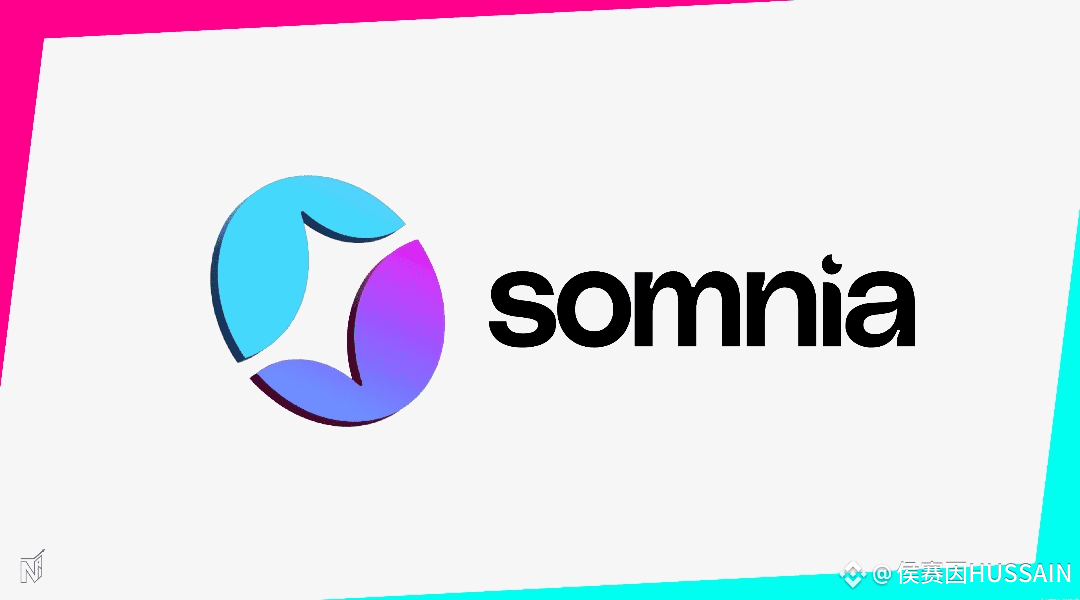
For decades, the digital world has been a black box. We surrendered our data, our assets, and our trust to colossal, opaque platforms, crossing our fingers that their centralized servers would remain honest. In the metaverse—the next great frontier of human interaction—that old contract simply won't work. Somnia has emerged not just as a high-performance Layer 1 blockchain for gaming and virtual societies, but as an architect of trust itself. By moving core operations, asset ownership, and governance entirely on-chain, Somnia is building a decentralized foundation where transparency isn't a promise, but an unchangeable law of digital physics.
The core of Somnia’s trust model lies in its commitment to a fully on-chain experience. In traditional Web2, a virtual sword or a social media follower is just an entry on a private company's ledger; it can be deleted, altered, or taken away. Somnia flips this script by ensuring that in-game assets, player achievements, and even the logic governing a virtual world's economy are recorded on the public, immutable ledger. This provable ownership transforms a digital item from a licensed privilege into a genuine asset, giving users the ultimate assurance: if you earned it, you own it, and anyone in the world can verify that fact instantly.
A key technological innovation cementing this trust is the MultiStream Consensus mechanism. Traditional blockchains often struggle with throughput, forcing complex games or social platforms to push most actions off-chain, sacrificing transparency for speed. Somnia solves this with an architecture that allows transactions to be processed in parallel streams. This isn't just about faster performance (with capabilities reaching hundreds of thousands of transactions per second); it’s a commitment to on-chain integrity at scale. By keeping the final execution of even real-time, high-frequency actions on the ledger, the network proves that high-performance doesn't require compromising the trust that blockchain was designed to deliver.
Transparency extends beyond mere asset ownership; it permeates the rules of the game itself. Consider the contentious issue of loot box mechanics or algorithmic matchmaking in conventional gaming, often shrouded in secrecy and perceived as rigged. On Somnia, smart contracts govern these systems. The rules for reward distribution, for crafting, or for skill-based pairings are all open-source and verifiable on the blockchain. Players are no longer guessing or hoping for fairness; they can audit the code that determines their fate, fostering a relationship built on verifiable fairness rather than blind faith.
The economic structure of the platform further reinforces this environment of trust. The SOMI token, used for staking and transaction fees, is integrated with a transparent economic model. Validators, who secure the network, must stake a significant amount of the token, aligning their financial incentives with the network’s long-term security and honest operation. Furthermore, a portion of transaction fees is permanently burned, a deflationary mechanism that is fully visible and auditable by the entire community. This transparent tokenomics ensures that the system's economic parameters are open for scrutiny, preventing the opaque financial manipulations common in centralized digital ecosystems.
Perhaps the most potent expression of Somnia's commitment to trust is its dedication to on-chain governance. In a truly decentralized virtual society, power cannot reside solely with the developers; it must be shared with the citizens. Somnia is pioneering models where Decentralized Autonomous Organizations (DAOs), driven by $SOMI token holders, will eventually control crucial network and ecosystem decisions, from technical upgrades to community incentive programs. This process—where every vote is recorded on the immutable ledger—transforms users from passive consumers into active, sovereign stakeholders with a clear, auditable voice.
Yet, the pursuit of total transparency must be balanced with the need for individual comfort. Somnia deftly addresses this with mechanisms for selective disclosure and privacy-preserving layers. While the integrity of assets and the execution of smart contracts must remain public for verification, personal data and user identities can be protected. This intelligent compromise allows for verifiable game mechanics without forcing the abandonment of personal security or a loss of immersion, ensuring that the trust architecture serves the human element of the virtual society.
Somnia is doing more than just building a blockchain; it’s constructing the unshakable foundation for the open metaverse. By making transparency an architectural feature rather than a corporate promise, by ensuring all core operations are on-chain, and by empowering its community with true, verifiable ownership and governance, it offers a refreshing antidote to the centralizing forces of Web2. It gives us a digital world where trust is not earned through marketing, but guaranteed by code, inviting millions of new users into a digital frontier they can finally call their own.

